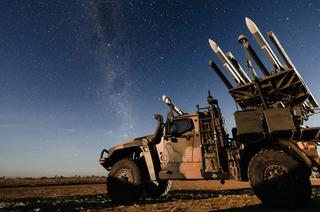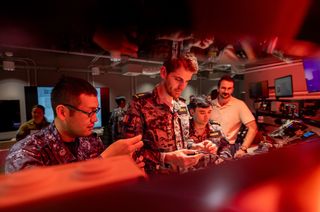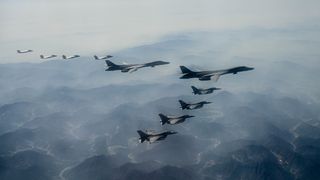The old ways of upholding conventional and extended nuclear deterrence in the Indo-Pacific are no longer fit-for-purpose, according to a new report from the United States Studies Centre (USSC) at the University of Sydney and The Asan Institute for Policy Studies, a South Korean think tank.
In December 2024, USSC and The Asan Institute co-hosted a workshop in Seoul, South Korea with leading experts from Australia, South Korea, Japan and the United States to discuss the future of conventional, minilateral, and extended nuclear deterrence measures in the Indo-Pacific under a second Trump administration. USSC Director of Foreign Policy and Defence Prof. Peter Dean, USSC Non-Resident Fellow and Asan Institute Research Fellow Dr Peter Lee and USSC Research Associate Kester Abbott summarised key insights and recommendations from the workshop in their report Allied extended deterrence: Towards a collective framework in the Indo-Pacific.
“With the capricious nature of the second Trump administration, basing multilateral extended nuclear deterrence on trusted relationships is no longer an effective model for US allies facing increasing threats,” Prof. Peter Dean noted, “Instead prioritising logistical and defence industrial collaboration offers a politically-neutral pathway to strengthen deterrence.”
Dr Peter K. Lee of the Asan Institute added, “North Korea, Russia, and China have broken longstanding assumptions about conventional and nuclear deterrence in recent years. This new report identifies options for how the United States can work with its most capable Indo-Pacific allies to strengthen the conventional military balance of power as well as update Cold War-era bilateral extended nuclear deterrence measures so that they are match fit for the challenges of the 2020s and beyond.”
The report calls for greater clarity from the US administration, it but also notes that the deteriorating regional strategic landscape has led to remarkable alignment in the defence and strategic planning between the four countries in recent years.
“In an increasingly contested environment, extended nuclear deterrence is an essential piece of any national security puzzle in the region. However, Australia, Korea, Japan and the United States have an asymmetry between our capabilities and interoperability, so a crawl-walk-run approach is essential to build meaningful collective security,” Prof. Dean concluded.
Allied extended deterrence: Towards a collective framework in the Indo-Pacific is now available to download.
Media enquiries
+61 468 480 165
ussc.media@sydney.edu.au
Key recommendations
- The Trump administration should provide greater clarity on the US role, interests and approach to the Indo-Pacific, including its expectations allies, nuclear modernisation and force posture plans.
- The United States, Australia, South Korea and Japan are more likely to advance quadrilateral cooperation by first pursuing a modest approach that prioritises the expansion and strengthening of logistical and defence industrial collaboration as a practical foundation for more ambitious efforts to bolster extended deterrence.
- The United States, Australia, South Korea and Japan should adopt a ‘crawl-walk-run’ approach while bringing together their varying strategic and defence groupings or efforts, focused on developing low-risk initiatives that build foundations for more advanced future security collaboration in collective extended deterrence.
- If the United States and an Indo-Pacific ally determine that nuclear integration is necessary, the four countries should consider looking at NATO’s SNOWCAT arrangement in Europe as a useful model from which to draw lessons.





